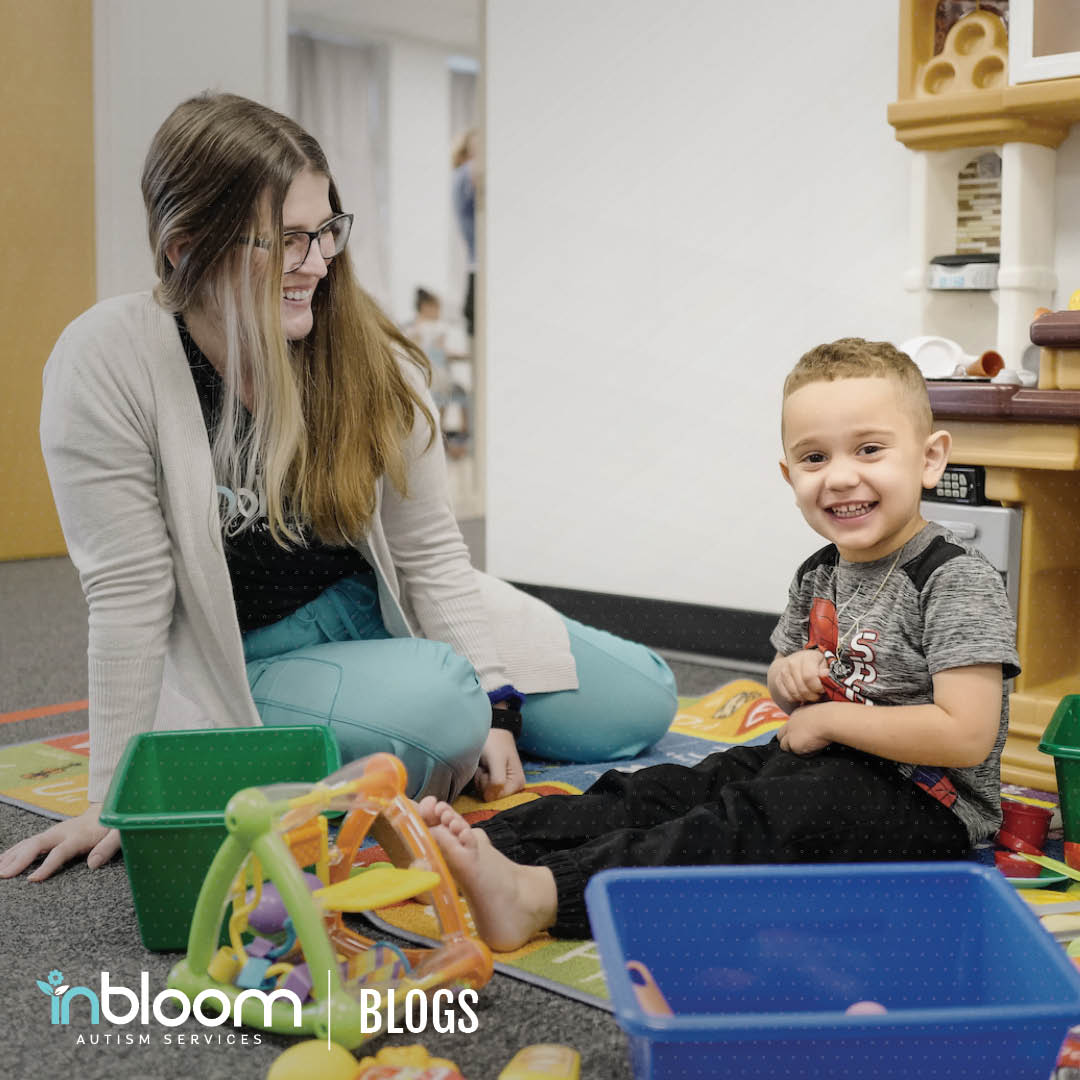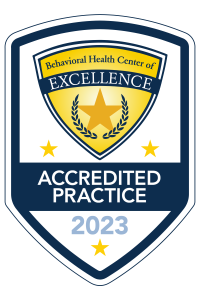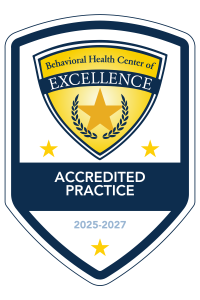What is Positive Reinforcement in ABA Therapy?

If you’re familiar with Applied Behavior Analysis (ABA) Therapy, you know that the field is chock-full of terms and acronyms that can confuse even the most seasoned! One often-used term is positive reinforcement.
You may have heard the term in other contexts, but it’s used a bit differently in ABA therapy. Positive reinforcement has to do with how we help the children we care for learn, grow, and reach their goals.
How Positive Reinforcement Supports Behavior Change
In ABA Therapy, one of our objectives is to teach daily living skills that will empower the children we work with. We do this primarily through increasing and decreasing targeted behaviors. One way we can encourage certain behaviors, like picking up toys, is through positive reinforcement.
Let’s break this phrase apart and explore what it means in applied behavior analysis and autism behavior therapy.
Breaking It Down: What Makes Reinforcement Positive?
Let’s break positive reinforcement into its two parts and explore what each one means and how it can benefit children with autism as part of ABA therapy.
Reinforcement Means Strengthening Behavior
Reinforcement in ABA is the process of strengthening or augmenting something, and in this case, that something is a pattern of behavior. Think of this as a social or communication skill, like asking a peer to play. The behavior could also be washing hands before eating.
Positive Means Adding a Reward
Positive, on the other hand, has nothing to do with being either good or bad. It simply means that we’re adding something to a child’s environment.
When we combine these two concepts, positive reinforcement simply means that we’re adding something to the environment (some type of reward) to increase the likelihood of a desired behavior or skill happening again in the future.
What’s an Example of Positive Reinforcement?
Let’s say a therapist asked a child named Sara to pick up her toys. Sara may not want to, but she knows that if she does, she’ll receive an apple slice as part of this positive reinforcement ABA therapy technique. After mulling it over, she decides to pick up her toys off the floor and is promptly rewarded with an apple slice! Thrilled, she’s much more likely to follow through on picking her toys up in the future because she now associates the action with something positive, demonstrating how positive reinforcement works within Applied Behavior Analysis to strengthen desired behaviors.

“The key is to find what makes the individual you’re working with tick and then use it as a reward.”
That’s what positive reinforcement in ABA therapy is all about! It’s the art of rewarding desired behaviors with a sprinkle of joy, making it more likely that these skills will happen again in the future. The outcome is a child mastering new skills, along with confidence and increased independence.
Why Positive Reinforcement Works in ABA Therapy
- Adaptable and Personalized. What works for one child might not work for another. Our ABA Therapy tailors positive reinforcement to suit each kiddo’s needs, making it a highly effective tool.
- It’s Motivational: Positive reinforcement taps into what makes an individual happy and motivated. Common ABA positive reinforcements in ABA therapy could be a sticker, apple slices, or a few minutes of playtime with a favorite toy. Whatever it is, we work it into your child’s treatment to help them meet their goals!
- It Builds Confidence: Everyone loves praise and rewards, and when children receive things that bring them joy following certain behaviors, it can boost their self-esteem and confidence.
- Consistency Is Key: The great thing about positive reinforcement is that it isn’t a one-time deal. It continues as long as the behavior continues. And the more we reward good behaviors, the more likely they are to become permanent.
And let’s be honest: it’s just plain fun! Positive reinforcement adds an extra dose of fun to the learning process, and at InBloom we’re all about making learning as enjoyable as possible!
Examples of Positive Reinforcement Used in ABA
In ABA therapy, positive reinforcement comes in all shapes and sizes, just like your favorite ice cream toppings. Let’s explore some examples.
Social Rewards
Social rewards include praise, a high-five, or encouraging words. This can build a child’s confidence and encourage them as they learn and master new skills.
Tangible Rewards
Some kiddos may respond well to tangible rewards. This could be a sticker, a snack, or other similar items.
Activity-Based Rewards
This type of reward is just what it sounds like. A child is given the opportunity to do a favorite activity as a reward. This activity-based reward could be anything, from time on the trampoline to playing with a favorite car. Such rewards are part of proven ABA therapy techniques that help reinforce positive behaviors in children with autism.
Choosing the Right Reinforcement for Each Child
We know that each child is unique and responds to different things. As with all ABA therapy techniques at InBloom, we make sure that rewards are tailored to each child, helping them learn and grow. Your child’s therapist will take the time to get to know them and learn what things could be effective rewards.
Positive Reinforcement in Early Intervention Therapy
So, there you have it. Positive reinforcement in ABA therapy is like a behavioral high-five! It’s a science-based, motivating, and overall fun way to encourage and maintain targeted skills. It can be incorporated into many ABA therapy techniques, such as shaping.
Now, whenever you hear your child’s therapist talking about positive reinforcement, you should have a better understanding of what this entails.
InBloom’s Approach to ABA Therapy
At InBloom Autism Services, our therapy is designed to help your child bloom and thrive. We offer many benefits, including:
- Individualized Treatment Plans. We create customized therapy plans for each kiddo, ensuring optimum learning and development.
- A Positive, Supportive Environment. We understand that learning is most effective when children enjoy it. Our play-based therapy engages children and helps them learn and grow.
At InBloom, we specialize in early intervention ABA Therapy, which means our centers and curriculum were created specifically for children 5 and under with autism. Our Learning Centers are a great opportunity for children to engage with their peers in a safe and fun environment. Learn more about ABA therapy or contact our helpful team at 888-754-0398 to explore what therapy at InBloom can do for your child.



